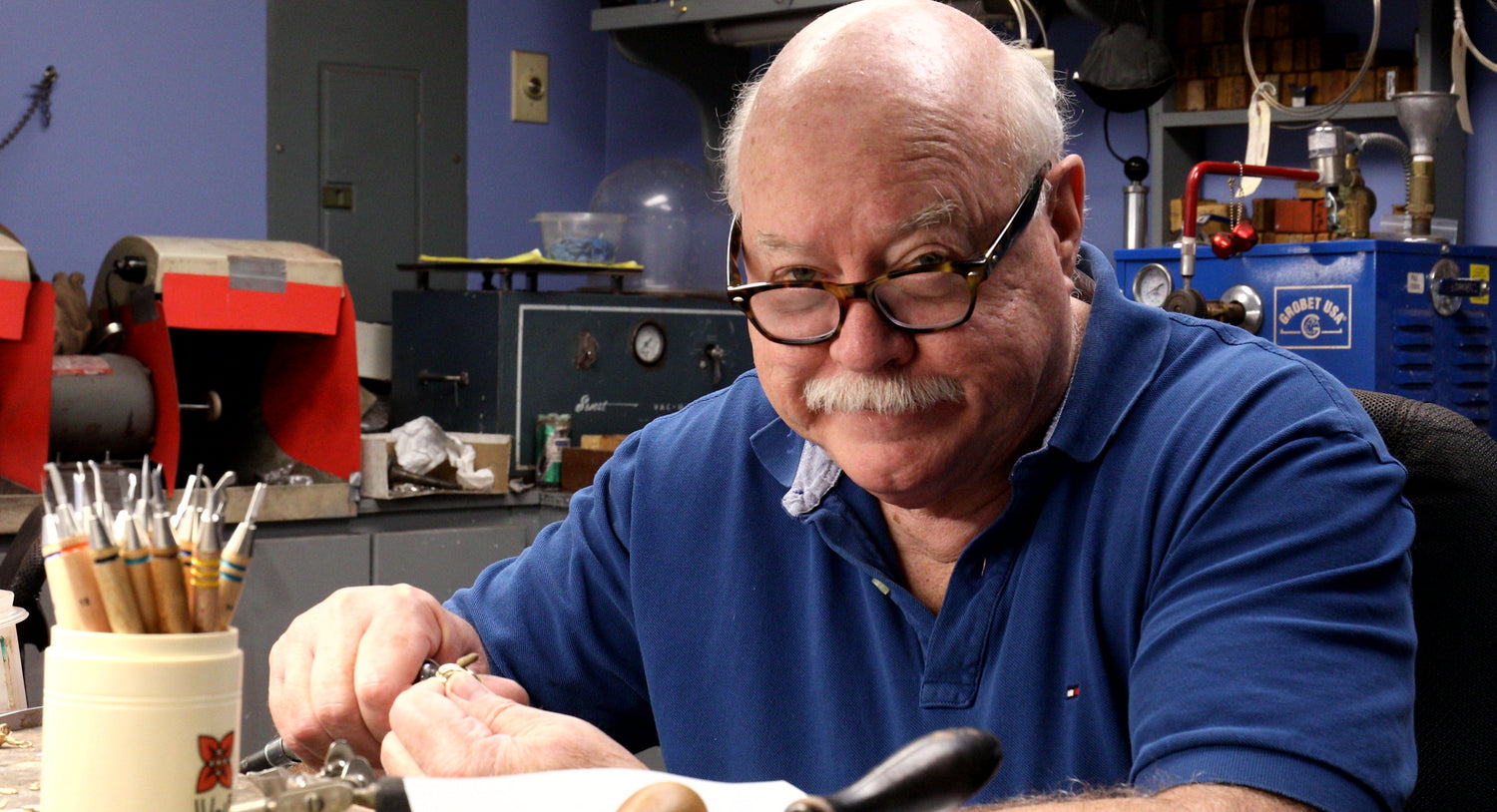
John Henry Whitmire
1951 - 2023
Founder of Whitmire Fine Jewelry
Special attention is put into every original piece and collection we offer.
Owner of Whitmire Fine Jewelry, John Henry Whitmire, has been designing and crafting jewelry on the coast of South Carolina since 1972. He attended the University of South Carolina, where he graduated with a degree in Creative Writing with an emphasis in Metal Works & Design. He also attended the Penland School of Crafts, a national center for craft education located in the Blue Ridge Mountains of Western North Carolina.
Whitmire Fine Jewelry is home to two original collections, the Treasures of the Sea & the Royal Sea Collection. Both collections are handcrafted by John Henry himself and are made into unique coastal keepsakes. The Beach inspired collections are specially made in Pawleys Island, SC and sold nationwide.
Selling Seashells by The Seashore
It was 1972 and time for a cool change when John Henry Whitmire got the call that launched his life as a jeweler by the sea. His eventual store, Whitmire Fine Jewelry, would be the first jewelry retailer in Pawleys Island, South Carolina, opened when beach tourism was a strict three-month stretch from Memorial Day to Labor Day.
“I was going to college in Columbia and got a construction job in Myrtle Beach for the summer. I had long hair and a beard. I was a hippie. And I met another guy with long hair and a beard who was making Navajo jewelry,” Whitmire recalls. The friend, Robin Jordan, was working at the famous Gay Dolphin Gift Cove, and Whitmire often sat in his studio to watch him work. One day Jordan called and asked Whitmire to come work with him.
“The day he called me I was pouring concrete for a condominium development, and it was 106 degrees,” Whitmire says. The decision to come in from the heat was easy, but the road forward was a challenge: Whitmire was putting himself through college at the University of South Carolina, where he earned a degree in creative writing with an emphasis on metal works and design while also working summers at the beach. He later attended Penland School of Craft in North Carolina, where he studied stone-setting and cloisonné.
After that phone call from his friend, their jewelry-making enterprise went through a relatively quick succession of changes: In 1973, the two moved to North Myrtle Beach, where Whitmire worked at the East West Bazaar and had a split arrangement with Jordan, each selling some of the other’s jewelry and taking a cut. In early 1973, Whitmire moved to Murrell’s Inlet, where he worked in a sweltering garden shed and sold jewelry on the sidewalks while tourists waited to get into restaurants. Later that year, he moved to Pawleys Island, where he has remained. His first building, October Silver, was a church. His current 1,000-square-foot shop has been in the Hammock Shops most of the past 50 years.
By the time other jewelers arrived 20 years later, Whitmire had created and established two lines of beach-memento jewelry, inspired by the sights he saw when relaxing on the beach.
“I would watch the tides, and the shells would roll out looking gold, and they’d roll back in looking like silver, and I thought I could make silver and gold jewelry out of these and sell them all up and down the shore. … So, you see, I sell seashells by the seashore,” Whitmire says.
“I might have been one of the pioneers doing this, but now every jewelry store here carries a line of seashell jewelry.”
Whitmire’s modestly priced Treasures of the Sea line, which sells primarily to beach vacationers, consists of silver and gold pendants, charms, and earrings. Popular pieces include a casting of the Pawleys Island Shell, and a charm depicting the Pawleys Island Chapel. Customers often bring in beach finds such as bits of colored glass to have them set into rings or bracelets, Whitmire says.
The higher-end Royal Sea Collection, which sells primarily to locals, offers pieces with gemstones or pearls attached, such as a diamond-covered palm tree.
One of the most important and enduring principles Whitmire learned, from his instructor Truman Teed at USC and later from the Penland school, is that design is paramount.
“Truman Teed doubled down on design. He said you have to understand how to make a piece of jewelry fit the body properly. … And Penland was very design driven. Technique is important, but design comes first.”
Whitmire continues to keep up with his skills by reading heavily and attending seminars at the major trade shows such as Jewelers of America and JCK. He also stays current by traveling to shows yearly. For many years, he alternated trips to Arizona with trips to Hong Kong, always looking to take home unique pieces that other stores wouldn’t have.
“I did that because if you don’t change your jewelry every year, you’re going to fall further and further behind.”
Whitmire says he thinks the key to success is listening.
“If you listen to your customers, you learn what they want. They’ll tell you what they like.”
The most important piece he ever made was for a classmate at USC, he says. The student was studying social work and got a job on a reservation in Oklahoma, working with two Crow women who were the last survivors of the Wolf tribe. Each wanted a ring with running wolves, to guide them to their ancestors.
“I had them draw the design and mail it to me, and I made two running wolves rings and mailed them back. I don’t think I even charged them for it. It’s not so much the value of the rings, it was the sentimental, emotional, religious meaning.”
Whitmire was touched by the response to his recent 50th anniversary party. More than 300 people attended and sent kind letters, notes, and gifts. The turnout might have been even more but for a technical mix-up wherein he accidentally sent invitations to the right addresses but wrong names of some 1,600 people. “A word of advice: Have someone else handle your invitations for you!”
As for his favorite design project, Whitmire says he has connections with tourists that go back generations. “It’s a joy. People go out and find things on the beach and I make a piece out of it to give to their children. Some give a seashell to their daughter, and she gives it to her daughter, and she gives it to the next daughter. It’s flattering and humbling.”
Wanda Freeman - Southern Jewelry News
